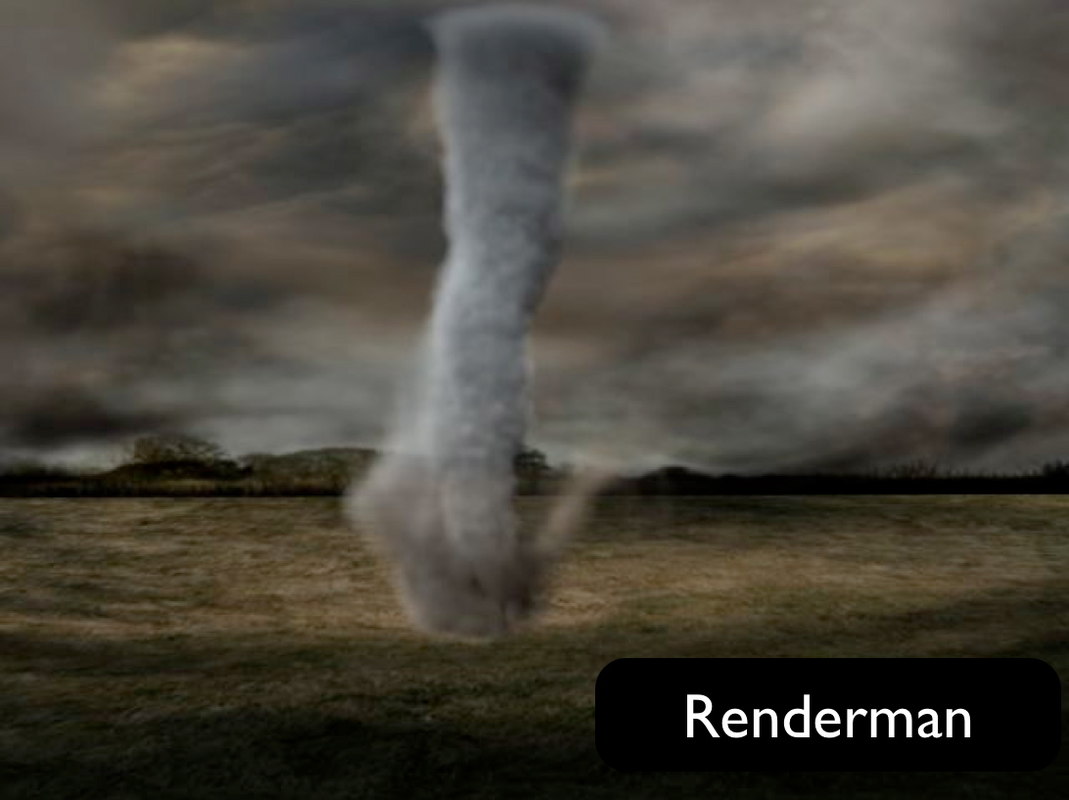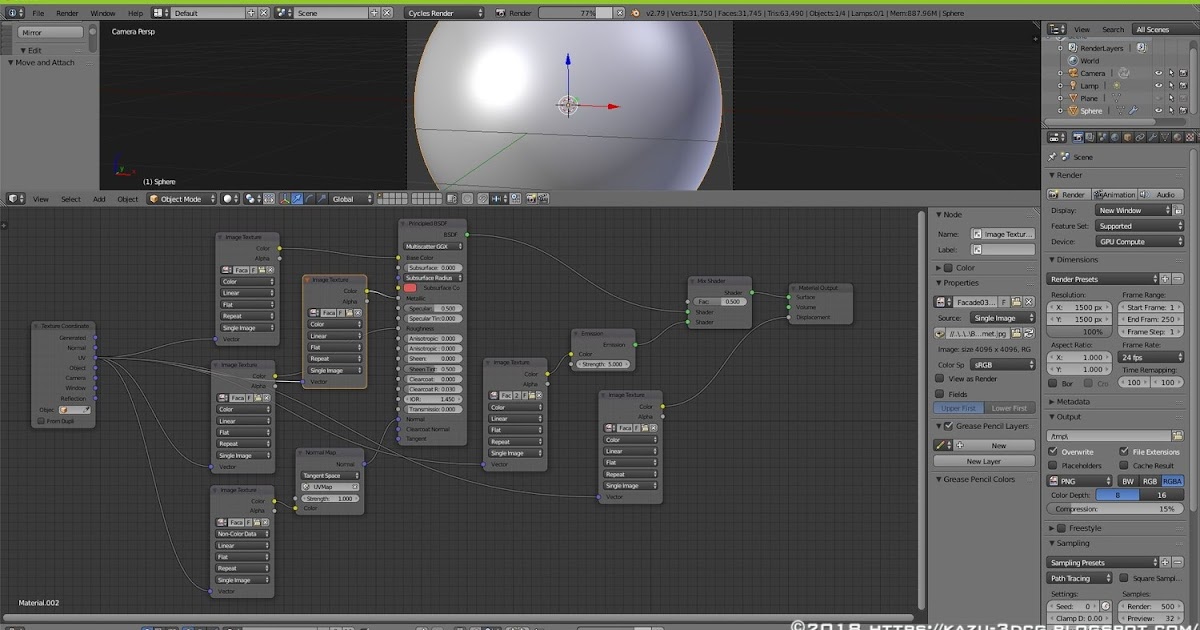Onward © Disney/Pixar
Newest version of Pixar's RenderMan engine can be used in Blender! Here's how to get started. Download RenderMan: https://render. But luckily, we're spoiled with a choice of excellent free renderers (RenderMan recently became free too). Or if you want to just try the paid ones, most of them offer free demo versions, or even full versions for non-commercial use. If you use Blender professionally, it's a good idea to stick your fingers in all the pies.
Welcome to the RenderMan 23 Documentation. Here you can find information on how to install, license, and use RenderMan and the various integration options like Maya, Houdini, and Katana. You can use the links on the left Contents Bar to navigate around. For further support you can visit us on the Answers forums!
RenderMan gives artists access to Pixar’s toolbox for lighting and look development, real tools that have already created amazingly sophisticated and complex imagery for feature film. This release represents exciting changes to the rendering framework, which has been tested and proven on feature films such as Coco,Blade Runner 2049, and Star Wars: The Last Jedi, establishing RenderMan as the most advanced rendering platform available. Developed for animation and VFX, RenderMan is focused on expanding the creative horizons for storytelling while raising the bar for performance and quality. More than just a renderer; it is a complete shading and lighting ecosystem, more powerful, accessible, and interactive than ever before.
Pixar's new commitment to users continues with the introduction of more examples, tutorials, and enhanced documentation for users of all levels that will continue to grow.
RenderMan 23 - The Perfect Bookend to the Pipeline
Blender Pixar
RenderMan 23 is an incremental release, bringing our latest developments to you without requiring major changes to existing look development, lighting, or pipeline.
USD – Together with Pixar’s USD team, we are improving RenderMan’s USD rendering capabilities so that we can render directly from Houdini 18's new LOPs framework Solaris
IPR – More always-on editing capability
- Dynamic editing of AOVs and LPEs.Add them, remove them, or edit them – all without restarting your Live Renders.This is perfect for lighters and TDs tweaking shots
- Dynamically change resolutions without having to restart your render
- Quicker artist feedback via a new capability to control how the first iterations are rendered to the screen
Selected highlights of RenderMan are:
True Interactive Rendering — Rely on RenderMan with the ability to continuously render while you work. See changes immediately and make decisions sooner while refining your artistic choices. RenderMan has the ability to update while artists model scenes, complete layout, perform look development, and much more.
UI Enhancements — Bridge products enjoy streamlined workflows to enhance our interactive rendering capabilities. Improved exposure of RenderMan Attributes and Options help users make decisions and see results at all stages of production.
OpenVDB Updated — PxrVolume provides more options to enhance performance as well as new support for OpenVDB 5.0.
Previous documentation versions (prior to 21) can be found through the RenderMan Support Forums for download. View your archive downloads and find the version you need, the documentation bundle is available on the page after selecting 'Next' from your version choice.

The Doxygen package for software developers is available under the Developer's Guide.
Head over to the Release Notes to get a more complete look at changes in RenderMan!
Originally posted on 4 December 2019. Scroll down for news of the 23.5 update.
Pixar has released RenderMan 23.0, the latest version of its production renderer, improving interactive rendering workflow, and updating the software’s adaptive sampling system.
RenderMan’s Houdini integration plugin gets support for Solaris, Houdini 18.0’s new look dev and shot layout toolset, and Houdini’s Procedural Dependency Graph.
The free non-commercial version of the software has also been updated, and is available now.
Further improvements to interactive rendering workflow
RenderMan 23.0 improves the new interactive rendering workflow introduced in last year’s RenderMan 22.0.
The 22.0 update removed the intermediate step of rendering to RenderMan’s old RIB format in interactive sessions, and made it possible to edit a scene without having to restart a render.
In 23.0, the range of edits that can be made without restarting has been extended, now including changing resolution and “dynamic editing of AOVs and LPEs” as well as simply authoring Light Path Expressions.
In addition, Pixar has added a new ‘decidither’ option, intended to “reduce tearing by updating the whole screen progressively with a dissolve-like effect” when working on heavy scenes.
Renderman Blender Plugin
A range of changes under the hood
Other changes include an update to RenderMan’s adaptive sampling system, which now uses statistical variance to determine when to stop sampling a pixel, and which now works in perceptual space.
Pixar says that the changes should result in “more consistent levels of noise” across an image.
RenderMan has also been updated to a newer version of the VFX Reference Platform, although it’s the 2018 spec, rather than the newer CY2019 standard supported in recent Autodesk and Foundry releases.
The plugin API has also been updated, so plugins will need to be recompiled before they can be used.
Other than that, Pixar’s press release cites “enhanced support” for USD, Pixar’s open format for exchanging scene data between DCC applications.
However, the only change listed on the product website is the option to render to the USD Hydra viewport via the hdPrman plugin, which was introduced with RenderMan 22.6. We’ll update if we find out more.
There’s also no mention in the release material of RenderMan XPU, Pixar’s upcoming hybrid CPU/GPU rendering system, scheduled for the “RenderMan 23 timeframe”. Again, we’ll update if we hear more.
RenderMan for Houdini gets support for Solaris and the PDG
Outside of the core software, the Houdini integration plugin gets a significant update, adding support for the RenderMan Hydra delegate in Solaris, Houdini 18‘s new look dev and shot layout toolset.
The delegate enables RenderMan to be used as a viewport renderer in place of SideFX’s Karma renderer.


In addition, RenderMan for Houdini offers “additional interactive display options, batch rendering options, RenderMan-specific geometry settings, and … advanced settings for light sources when using Solaris”.
The update also introduces support for the Procedural Dependency Graph, Houdini’s task-scheduling and dependency-management system, introduced in Houdini 17.5.
Googl chrome case extension only working for youtube on mac. Users get Houdini TOP nodes for scheduling renders, denoising and the generation of textures and RIB files.
Free non-commercial edition of RenderMan 23.0 available to download now
Unlike the past few major updates to RenderMan, the free non-commercial edition of the software has been updated in sync with the commercial release, rather than several months later.
It isn’t watermarked or feature limited – although it does time out every 120 days – and can be used for personal projects, research, and tools development, including the development of commercial plugins.
To download it, you will need to register for a free account on Pixar’s forum, which entitles you to two node-locked licences. You can find more details in Pixar’s online FAQs.
An image from upcoming Pixar feature Onward, used as a marketing graphic for RenderMan 23.1.
Updated 24 January 2020: Pixar has released RenderMan 23.1.
The update adds a new roughness parameter to the PxrSurface material, making it possible to have separate roughness values for reflections and refractions in glass.
Maya users get a number of workflow improvements when working with Alembic caches, including the option to auto-save edits to RenderMan Look Files, plus support for Maya 2020.
Original (left) and new handling of surface shadowing when using bump or normal maps in RenderMan 23.2.
Updated 5 March 2020: Pixar has released RenderMan 23.2. It’s mainly a bugfix release, though BxDFs get a new, optional parameter that results in “smoother, more natural shadowing” with bump or normal maps.

Six global illumination maps baked from the Cornell box on the right using RenderMan’s new baking system.
Updated 20 May 2020: Pixar has released RenderMan 23.3. It’s a significant update, adding support for baking illumination, both to 2D textures and 3D point clouds.
The changes both restore functionality lost in the transition from the old Reyes pipeline to RenderMan’s new RIS framework, and extend the software’s original baking capabilities.
As in ray trace rendering, Light Path Expressions can be use to isolate arbitrary components of the global illumination in a scene for baking.
Suggested use cases include precomputing pattern graphs and baking lightmaps: either to optimise renders within RenderMan itself or to generate assets that can be used in game engines like Unreal Engine.
It’s still a work in progress, and comes with some limitations: baking is not compatible with curves, and is non-incremental, so it can’t be used with the PxrVCM bidirectional path tracer, or stop-and-resume rendering.
Other changes include support for macOS 10.15 Catalina, and for rendering packed USD geometry within the geometry context in RenderMan for Houdini. You can find a full list of changes via the links below.
Updated 3 September 2020: Pixar has released RenderMan 23.4.
The update improves the Checkpointing process, making it possible to save state of an image at a series of intervals during rendering. Interrupted renders can be resumed from the checkpoints.
Updated 3 November 2020: Pixar has released RenderMan 23.5.
The update introduces a new Eulerian method for calculating deformation motion blur on volumes, which Pixar says reduces pre-processing times and memory use over the old Reves method.
Mesh lights and emissive volumes are now importance sampled according to relative power over the surface or volume, which should result in noise-free images in a shorter time.
The Houdini plugin gets improved support the Solaris toolset, including support for AOVs, LPEs, and the new interactive crop and depth of field features introduced in Houdini 18.5.
Since we last updated this story, Pixar has also previewed RenderMan 24 and its new official Blender plugin.
Pricing and availability
RenderMan 23.5 is is available for 64-bit Windows 8.1+, macOS 10.13+ and CentOS/RHEL 7.2 Linux. The integrations are compatible with Maya 2018.3+, Houdini 17.0+, Katana 3.0+ and Mari 4.5+.
New node-locked or floating licences cost $595.
Read a full list of new features in RenderMan in the online release notes
Download the free non-commercial version of RenderMan 23 (Registration required)
Related posts:
Tags: adaptive sampling, Alembic cache, AOV, API, auto save, backwards compatibility, baking, bidirectional path tracer, bump map, BxDF, checkpointing, decidither, free, GI baking, glass, hdPrman, Houdini, Hydra, illumination baking, integration, interactive rendering, Katana, Light Path Expression, lighting, Lightmap, live rendering, LPE, Maya, motion blur, new features, non-commercial, normal map, packed USD, PDG, perceptual space, performance, Pixar, plugin, point cloud, precomputation, price, Procedural Dependency Graph, PxrSurface, PxrVCM, rendering, RenderMan, RenderMan 22.6, RenderMan 23, RenderMan 23.0, RenderMan 23.0 Non-Commercial, RenderMan 23.1, RenderMan 23.2, RenderMan 23.3, RenderMan 23.4, RenderMan 23.5, Renderman for Houdini, RenderMan for Katana, RenderMan for Maya, RenderMan Look File, RenderMan XPU, resume dropped frame, resume interrupted render, Reyes, RIB, RIS, roughness, Solaris, speed boost, speed increase, statistical variance, surface shadowing, system requirements, TOP node, Unified Scene Description, Universal Scene Description, Unreal Engine, USD, VFX Reference Platform, VFX Reference Platform 2018, VFX Reference Platform 2019, Volume, volumetric

